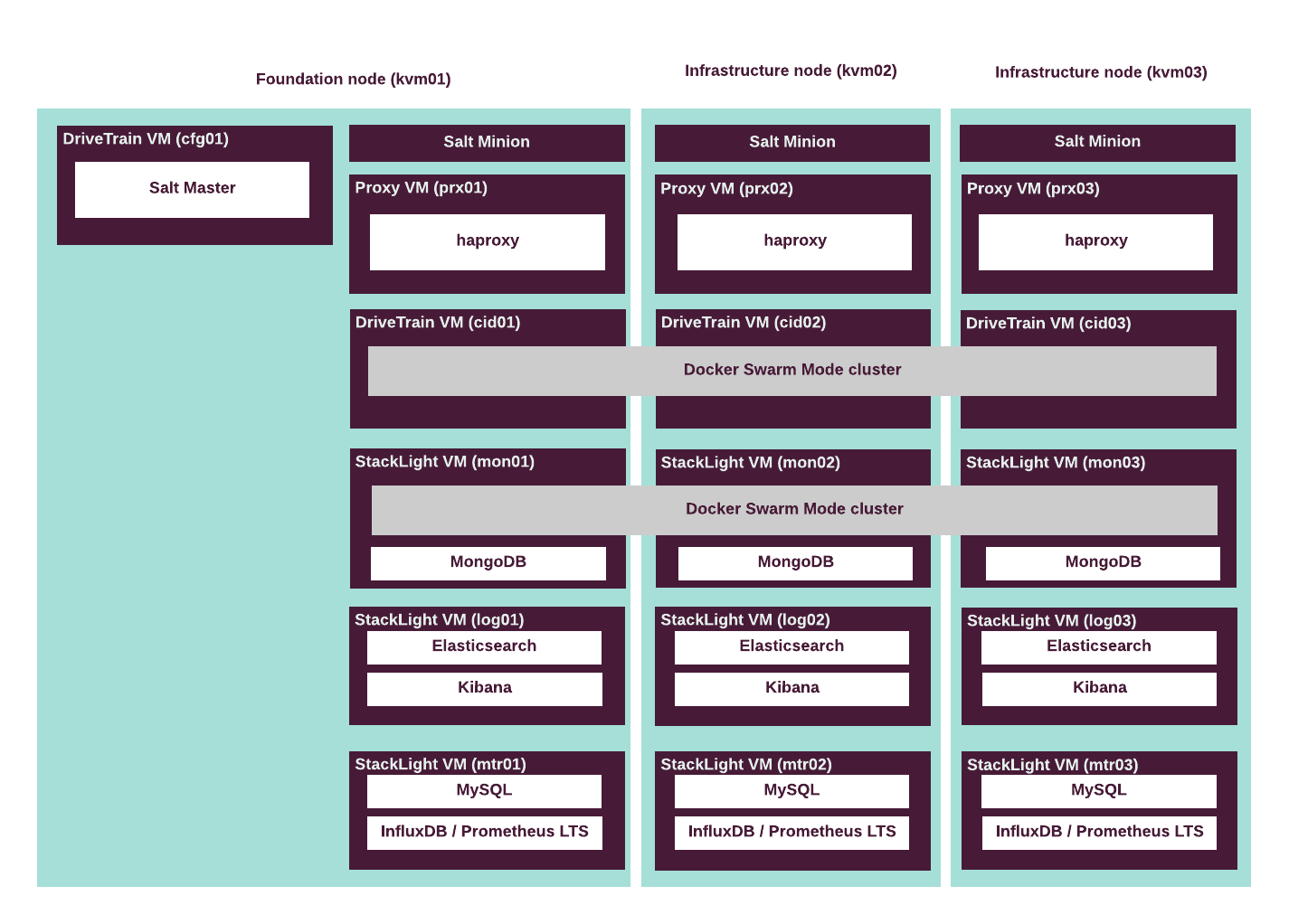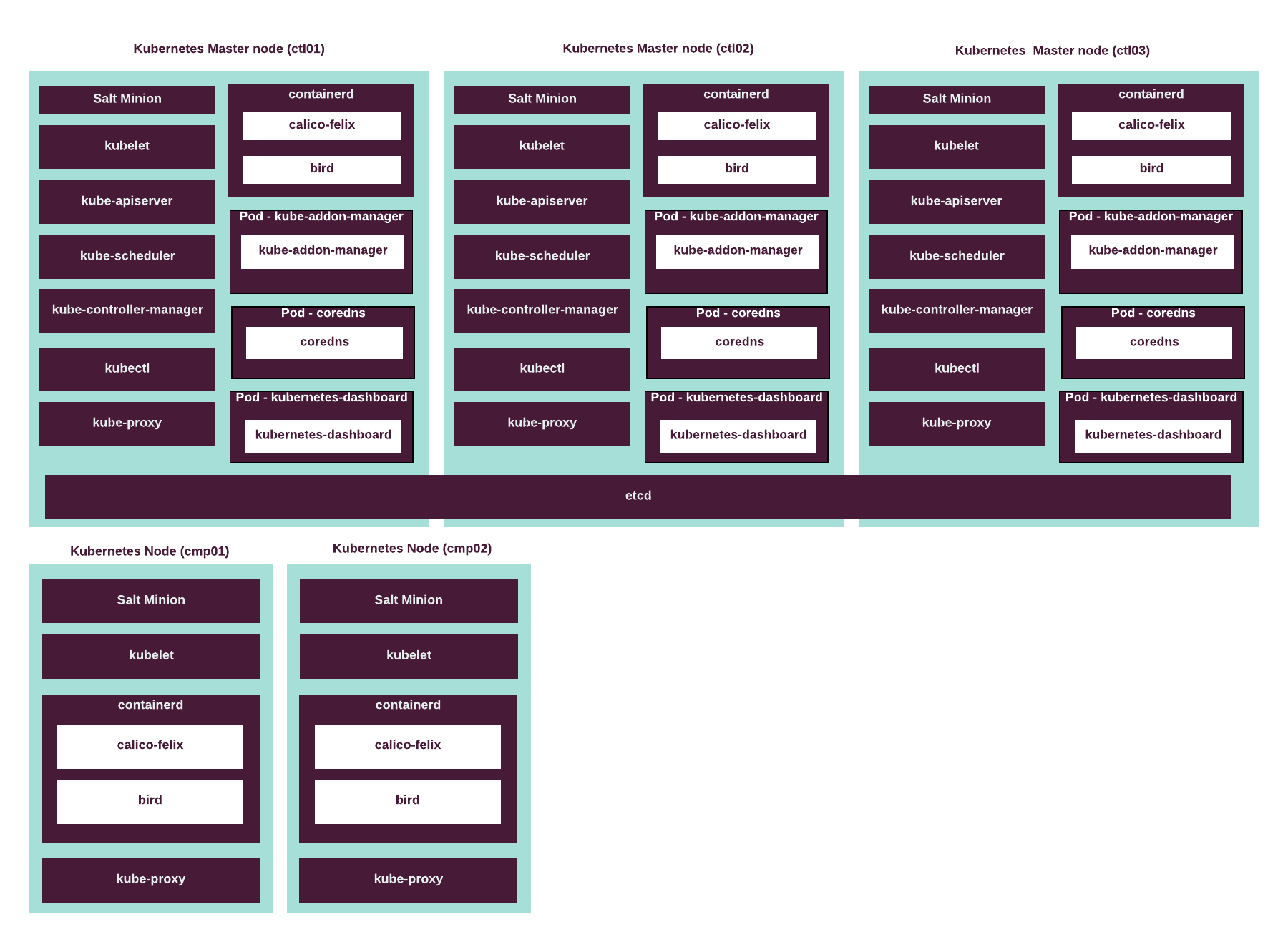Kubernetes cluster overview
Kubernetes cluster overview¶
Caution
Kubernetes support termination notice
Starting with the MCP 2019.2.5 update, the Kubernetes component is no longer supported as a part of the MCP product. This implies that Kubernetes is not tested and not shipped as an MCP component. Although the Kubernetes Salt formula is available in the community driven SaltStack formulas ecosystem, Mirantis takes no responsibility for its maintenance.
Customers looking for a Kubernetes distribution and Kubernetes lifecycle management tools are encouraged to evaluate the Mirantis Kubernetes-as-a-Service (KaaS) and Docker Enterprise products.
Kubernetes provides orchestration, scheduling, configuration management, horizontal pods scaling, and updates to the containerized customer workloads. Kubernetes components are typically installed on bare metal nodes.
At a high level, a Kubernetes cluster includes the following types of nodes:
- Kubernetes Master
- Runs the services related to the Kubernetes control plane services.
The default hostname is
ctl0X. - Kubernetes Node
- Runs user workloads (previously known as Minion). In MCP, a Kubernetes Node
is identical to a compute node. The default hostname is
cmp00X.
The MCP Kubernetes design is flexible and allows you to install the Kubernetes control plane services on an arbitrary number of nodes. For example, some installations may require you to dedicate a node for the etcd cluster members. The minimum recommended number of nodes in the Kubernetes control plane for production environments is three.
The following diagram describes the minimum production Kubernetes installation with Calico:

